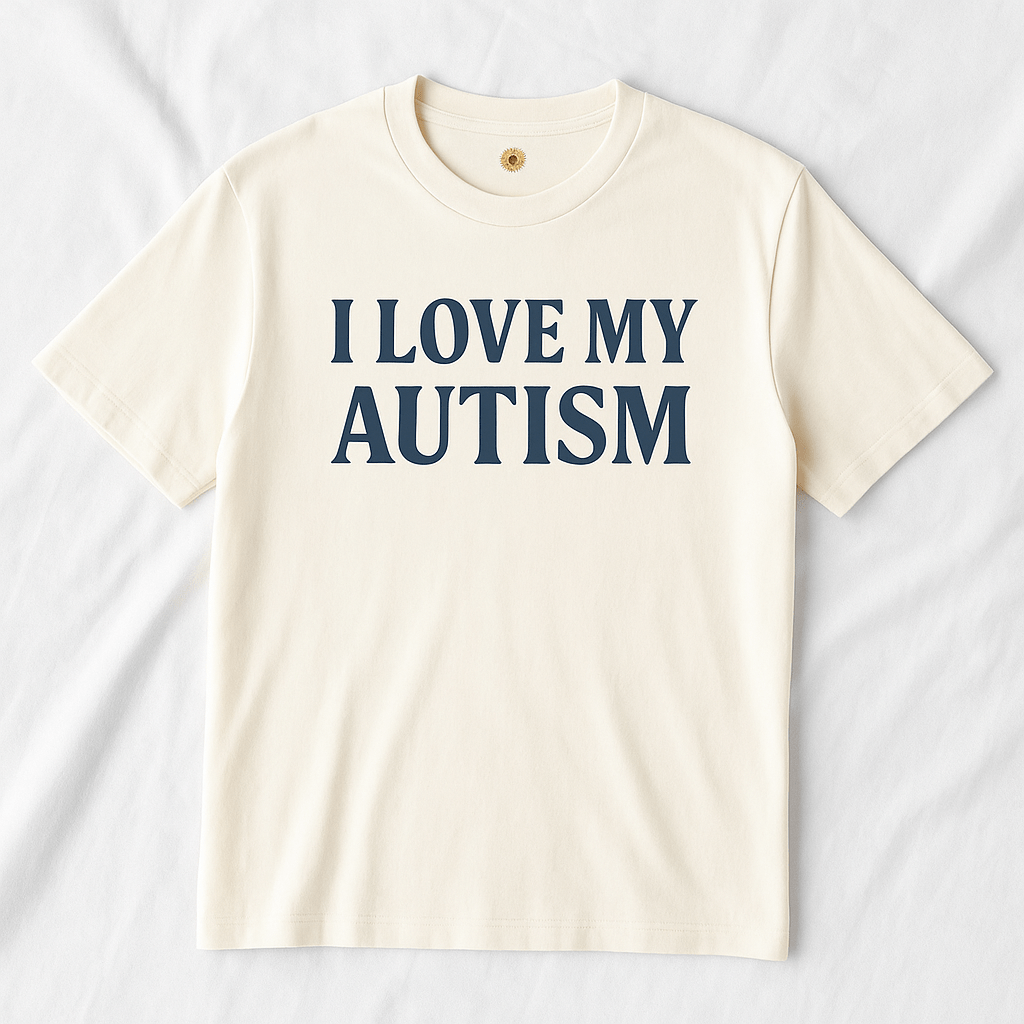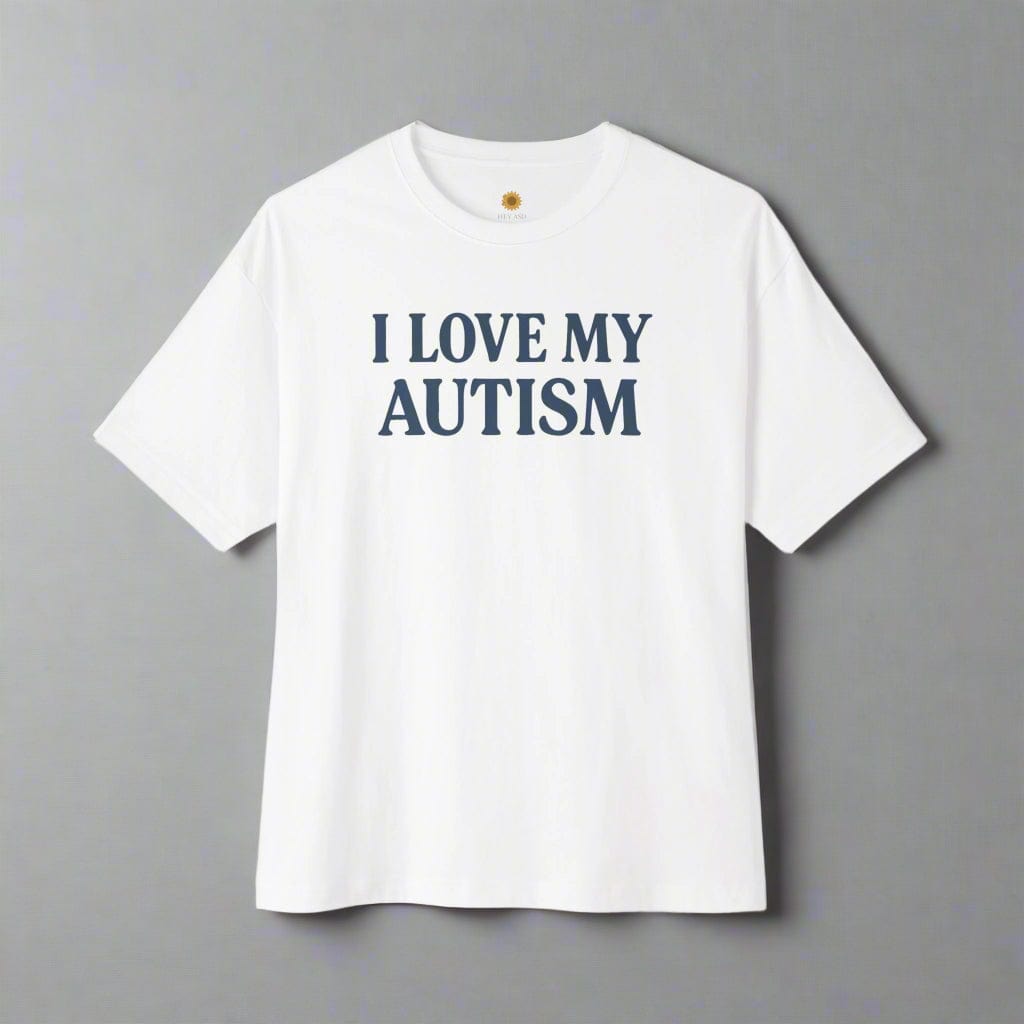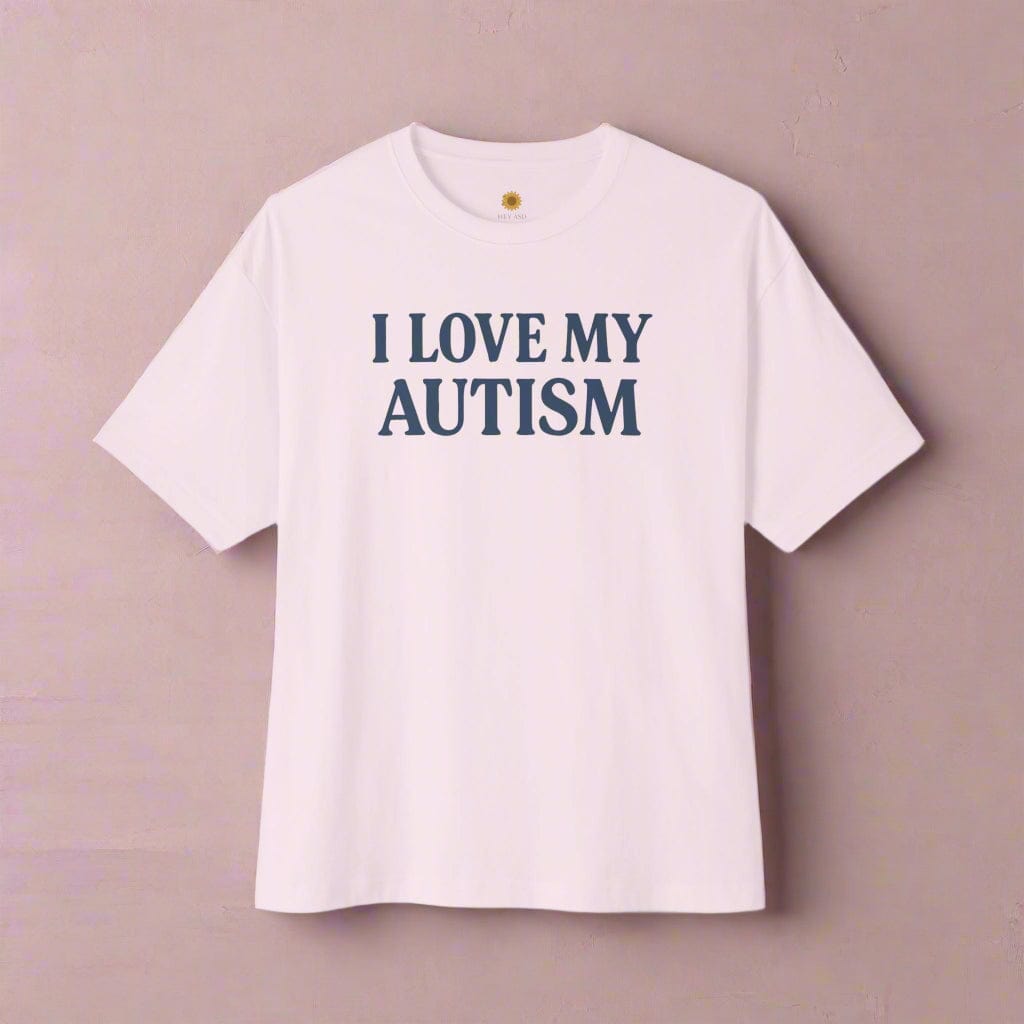ABA Therapy and Self-Regulation Skills

Written by HeyASD.com Team
ABA Therapy, or Applied Behavior Analysis, is a comprehensive approach to developing essential life skills in individuals, particularly those with autism spectrum disorders. By focusing on the principles of behavior modification, ABA Therapy aims to enhance self-regulation, social interaction, and independence. This article delves into the multifaceted aspects of ABA Therapy and its role in fostering self-regulation skills, managing challenging behaviors, and promoting overall well-being.
Key Takeaways
- ABA Therapy utilizes evidence-based techniques such as discrete trial training, positive reinforcement, and behavior shaping to support skill development and behavior management.
- Personalized strategies tailored to each individual's needs are a cornerstone of ABA, involving comprehensive assessments and the expertise of Behavior Analysts.
- Self-regulation skills are enhanced through a variety of therapeutic approaches including Cognitive Behavioral Therapy (CBT), Dialectical Behavior Therapy (DBT), and Self-Regulation Therapy.
- ABA Therapy is instrumental in teaching emotional regulation, social skills, and fostering independence in daily living tasks, contributing to improved quality of life.
- The integration of ABA with other therapeutic modalities and the measurement of progress through systematic tracking are crucial for a holistic treatment plan and long-term success.
Understanding ABA Therapy
Principles and Techniques
At the heart of ABA Therapy lies a commitment to understanding and shaping behavior through a set of well-established principles and techniques. Behavior is a form of communication, and ABA focuses on interpreting this language to foster positive change. Techniques are tailored to each individual, but they share common goals: increasing beneficial behaviors and reducing those that may be harmful or interfere with learning.
Self-regulation is a critical skill that ABA therapy aims to develop, especially in children. Techniques for children differ from those for adults, as they are still mastering self-control and healthy emotional expression. Here are some key techniques used in ABA to bolster self-regulation:
- Positive reinforcement to encourage desired behaviors
- Clear and consistent consequences for negative behaviors
- Teaching alternative behaviors to replace problematic ones
ABA therapy is not a one-size-fits-all approach. It's a dynamic process that evolves with the individual's progress and changing needs.
Understanding the functions of behavior is crucial in ABA therapy. The four functions that guide behavior change are attention, escape, access to tangibles, and sensory stimulation. Each function provides insight into why a behavior occurs, allowing behavior analysts to develop effective strategies.
The Role of the Behavior Analyst
Behavior analysts are pivotal in the ABA therapy process, employing their expertise to craft and oversee individualized treatment plans. They are the architects of change, meticulously analyzing behaviors and sculpting interventions that foster skill acquisition and behavior modification.
Assessment is the cornerstone of their work, ensuring that each strategy is uniquely suited to the individual's needs. Through continuous monitoring and adjustment, behavior analysts ensure that the therapy remains effective and responsive to the client's progress.
- Initial Consultation
- Comprehensive Assessment
- Strategy Development
- Implementation Oversight
- Progress Evaluation
With a keen eye for detail and a commitment to evidence-based practices, behavior analysts guide individuals on a transformative journey towards improved behaviors and increased independence.
Assessment and Personalized Strategies
At the heart of ABA therapy lies a commitment to individualized care. Each journey begins with an Initial Assessment and Goal Setting, a critical step that shapes the entire therapeutic process. This assessment is not a one-time event but a continuous dialogue, adapting to the individual's growth and changing needs.
- Adaptability and Flexibility: Therapy must evolve with the individual, ensuring that strategies remain relevant and engaging.
- Personalized Goals: Milestones are set based on the individual's unique profile, with a focus on leveraging strengths and addressing challenges.
- Engagement and Consistency: Success hinges on regular therapy sessions and applying strategies consistently across all environments.
- Family Involvement: The support and participation of family members are invaluable, amplifying the impact of therapy.
Note that challenges and plateaus are a natural part of the learning process. Our team is prepared to navigate these moments, ensuring that every step taken is a step towards meaningful progress.
By prioritizing these elements, ABA therapy fosters not just behavioral skills but also independence in daily living. It's about growth, adaptation, and celebrating each victory, no matter how small, as we adjust goals to reflect the individual's journey.
Building Self-Regulation Skills
Cognitive Behavioral Approaches
Cognitive Behavioral Therapy (CBT) is a cornerstone of ABA therapy, focusing on the interplay between thoughts, feelings, and behaviors. CBT empowers individuals to recognize and alter negative thought patterns, fostering improved self-regulation. Techniques such as cognitive reframing encourage a proactive approach to emotional responses, leading to healthier coping mechanisms.
Italics are used here to emphasize the transformative potential of cognitive reframing, a technique that allows individuals to assess and adjust their perceptions of stressful situations. By identifying thoughts that are unhelpful or inaccurate, one can reshape their emotional landscape and react more adaptively to challenges.
- Mindfulness practices
- Deep breathing exercises
- Progressive muscle relaxation
These methods complement CBT by anchoring the individual in the present moment, reducing the impact of stressors. The synergy between mindfulness and CBT creates a robust framework for developing self-regulation skills.
By integrating mindfulness with cognitive behavioral strategies, ABA therapy provides a multifaceted approach to self-regulation. This combination equips individuals with a toolkit for managing their emotions and behaviors effectively.
Dialectical Behavior Therapy
Dialectical Behavior Therapy (DBT) is a transformative approach that extends beyond the scope of traditional Cognitive Behavioral Therapy. DBT focuses on the practical development of coping skills to manage stress, regulate emotions, and improve relationships. It's particularly effective for individuals who experience intense emotions and those with behavioral challenges.
DBT is structured around four core modules:
- Mindfulness: Enhancing present-moment awareness
- Emotion Regulation: Learning to manage and change intense emotions
- Distress Tolerance: Tolerating pain in difficult situations without worsening it
- Interpersonal Effectiveness: Navigating relationships more effectively
By mastering these skills, individuals can navigate life's challenges with greater resilience and emotional control.
The integration of DBT into ABA therapy can be particularly beneficial for individuals with autism, as it provides a structured framework for understanding and managing emotions, which is often a challenge in this population. The emphasis on practical skills makes DBT a valuable component in the toolkit for fostering self-regulation.
Self-Regulation Therapy
Self-regulation therapy is grounded in the understanding that our brains are malleable, and with intentional effort, we can forge new neural pathways that lead to healthier responses to stress. This therapy is pivotal in teaching individuals to guide their own thoughts, feelings, and behaviors towards achieving their goals.
Self-regulation encompasses cognitive, emotional, and behavioral aspects, each playing a crucial role in how we respond to various situations. By mastering self-regulation techniques, individuals can learn to observe and challenge unhelpful thought patterns, experience emotions without being overwhelmed by them, and choose intentional actions over impulsive reactions.
- Cognitive: Observing and challenging unhelpful thought patterns
- Emotional: Noticing and feeling emotions without letting them take over
- Behavioral: Choosing intentional behaviors instead of reacting impulsively
Self-regulation therapy empowers individuals to respond effectively to challenges, rather than succumbing to instinctive, and often unproductive, reactions. It's a transformative process that equips people with the skills to navigate the complexities of their emotional and behavioral landscapes.
Managing Challenging Behaviors
Positive Reinforcement Methods
In the realm of ABA therapy, positive reinforcement stands out as a cornerstone technique. It's a strategy that rewards desired behaviors, thereby increasing the likelihood that these behaviors will be repeated. The approach is simple yet powerful: identify a behavior, provide a reward when it occurs, and watch as the behavior becomes more frequent.
Positive reinforcement can take many forms, from verbal praise to tangible rewards. Here's a quick rundown of how it might look in practice:
- Verbal praise or encouragement after a task is completed
- Tokens or points that can be exchanged for a preferred item or activity
- Access to a favorite toy or game following a demonstration of the target behavior
By consistently applying positive reinforcement, therapists can effectively shape a child's behavior, making it a vital tool in the ABA toolkit.
The success of this method hinges on its ability to fit seamlessly into the learning process, providing more opportunities for practice and reinforcement. It's not just about the immediate reward; it's about building a foundation for lasting behavioral change.
Strategies for Behavior Extinction
In the realm of ABA therapy, behavior extinction plays a pivotal role. It involves the systematic withdrawal of reinforcement for unwanted behaviors, leading to their gradual reduction. This technique is grounded in the understanding that behaviors maintained by reinforcement will diminish when that reinforcement is no longer provided.
Extinction must be applied consistently to be effective. Here's a quick rundown of steps to ensure success:
- Identify the behavior to be extinguished
- Determine what reinforcement is maintaining the behavior
- Withhold reinforcement when the unwanted behavior occurs
- Monitor and record the frequency of the behavior
- Provide alternative, positive behaviors to replace the unwanted one
Consistency is key. Without it, the unwanted behavior may resurface, stronger than before.
By integrating extinction strategies with other ABA techniques, such as positive reinforcement and shaping, therapists can create a comprehensive approach to managing challenging behaviors. The ultimate goal is to support individuals in achieving greater independence and emotional regulation, paving the way for a more adaptable and fulfilling life.
Shaping and Generalization Techniques
Shaping and generalization are pivotal in ABA therapy, focusing on the gradual development of complex behaviors and the transfer of skills across various settings. Shaping involves reinforcing successive approximations of a target behavior, allowing for small steps towards the desired outcome. This method is particularly effective for children who may find it challenging to master a skill in one go.
Generalization ensures that the behaviors learned in therapy extend to other environments, such as home, school, or community settings. It's about making the skills stick, so they become part of the individual's natural repertoire. Here's how these techniques can be integrated into a comprehensive ABA program:
- Step 1: Identify the target behavior and break it down into manageable components.
- Step 2: Reinforce each step progressively, moving closer to the target behavior.
- Step 3: Introduce variations in the setting, prompts, and people involved to encourage generalization.
- Step 4: Monitor and adjust strategies as the individual progresses, ensuring skills are maintained over time.
By focusing on shaping and generalization, ABA therapists can create a path for individuals to not only learn new skills but to effectively use them in their daily lives, enhancing their independence and quality of life.
Fostering Social Skills Through ABA
Group Activities and Peer Interaction
Group activities are a cornerstone of fostering social skills within ABA therapy. By engaging in play-based settings, children can practice and hone their social abilities alongside peers. This method not only encourages emotional growth but also promotes an understanding of neurodiversity and empathy.
Social skills groups offer a structured environment where individuals can learn from one another through natural interactions. These groups often focus on:
- Parallel play and recognizing social cues
- Responding appropriately to social interactions
- Initiating conversations and sharing interests
- Understanding emotions and developing friendships
Engaging with nature and animals during group activities can be particularly effective. It provides a relaxing yet stimulating environment that encourages communication and social bonding.
Finding the right fit for each individual is crucial. ABA therapy aims to create a supportive atmosphere where children can explore social dynamics and build long-term friendships, especially in settings that mimic real-life situations. The joy of interacting with animals, for example, can be a springboard for learning to share and care within a group context.
The Role of Play in Social Development
In the realm of ABA therapy, the structured nature of sessions is a stark contrast to the unbounded world of child-led play. Play is a fundamental element in fostering social development, particularly for children with Autism Spectrum Disorder (ASD). Through play, children learn to navigate social cues, develop empathy, and engage in meaningful interactions with their peers.
Interactive play-based settings, such as social skills groups, provide a natural environment for children to practice and hone these skills. They learn to take turns, share interests, and build friendships—milestones that are crucial for their social growth. Moreover, approaches like Floortime therapy emphasize following the child's lead, creating a nurturing space that encourages exploration and self-expression.
The role of play extends beyond mere entertainment; it is a vital tool for emotional and cognitive development, shaping the way children with ASD understand and interact with the world around them.
While ABA therapy focuses on modifying outward behaviors, integrating play can enhance its effectiveness by addressing the underlying social and emotional needs of the child. This integration ensures a more holistic approach to development, one that values the importance of imagination and creativity alongside behavioral skills.
Enhancing Communication Abilities
In the journey of enhancing communication abilities through ABA therapy, the initial phases are crucial. Early goals are set to establish foundational communication skills, such as making eye contact, gesturing, or utilizing assistive technology tailored to the individual's needs. As individuals progress, they often expand their vocabulary, engage in reciprocal conversation, and improve their understanding and use of language within social contexts.
Visual stimming, a common behavior in individuals with autism, can sometimes be a barrier to effective communication. However, with the right strategies, it can also be harnessed to facilitate engagement and expression. For instance, therapists might incorporate preferred visual stimuli to capture attention and encourage communicative attempts.
Progression in communication skills is marked by increased vocabulary and the ability to engage in back-and-forth conversation. This advancement is not just about words; it's about making meaningful connections.
To illustrate the development of communication skills, consider the following stages:
- Initial Phase: Establishing basic communication (eye contact, gestures, use of technology).
- Intermediate Phase: Expanding vocabulary and beginning to engage in simple reciprocal conversations.
- Advanced Phase: Mastering complex communication, including nuanced social language and understanding of non-literal language.
Daily Living and Independence
Self-Care and Routine Building
Developing independence in daily living is a cornerstone of ABA therapy. Self-care and routine building are essential for individuals to lead fulfilling lives. Starting with basic self-care such as dressing, eating, and hygiene, ABA therapy gradually introduces more complex tasks like cooking simple meals, managing time, and handling money.
Self-regulation is key to mastering these skills. It involves setting personal standards, finding motivation, monitoring progress, and exerting willpower to overcome short-term urges. These components, akin to building a muscle, can be strengthened with practice and support.
By consistently applying ABA techniques, individuals can learn to navigate their daily routines with greater autonomy, paving the way for increased self-confidence and independence.
Here are the foundational steps to building self-care routines:
- Identifying values-based behaviors
- Establishing a consistent schedule
- Breaking down complex tasks into manageable steps
- Celebrating small victories to boost motivation
As individuals progress, they can tackle advanced skills that contribute to academic and cognitive growth, such as attention, problem-solving, and applying knowledge in varied contexts. The journey towards independence is not just about learning tasks but also about embracing the self-regulation needed to thrive in everyday life.
Adapting to Change
Change is an inevitable part of life, and for individuals undergoing ABA therapy, the ability to adapt is crucial for independence and growth. Adaptability and flexibility are key in tailoring therapy to the individual's evolving needs, ensuring that the process remains both effective and engaging. Celebrating each success and adjusting goals accordingly can reinforce positive behaviors and foster a sense of achievement.
- Early ABA sessions focus on managing behaviors through positive reinforcement, setting the stage for growth and adaptation.
- As individuals progress, they learn to express needs adaptively, follow routines, and handle changes with reduced distress.
- The intermediate phase of ABA treatment places an emphasis on complex social skills and independence in daily living tasks, marking significant strides in adapting to new routines and transitions.
Note that challenges and plateaus are a natural part of the learning process. Our team is equipped with strategies that adapt to each child's unique needs, ensuring continued progress.
Self-regulation techniques allow individuals to align their behaviors with their values, leading to improved responses to stressful situations over time. It's about developing the motivation and willpower to meet personal standards and monitoring behaviors to identify and adjust to what causes shortcomings.
Promoting Autonomy in Everyday Tasks
Achieving independence in daily living is a cornerstone of ABA therapy. Self-care and routine building are essential starting points, focusing on basic self-care such as dressing, eating, and hygiene. As individuals progress, they tackle more complex tasks like cooking simple meals, managing time, and handling money, fostering a sense of autonomy.
Advanced skills in daily living are not just about the tasks themselves, but about building the confidence and self-efficacy to handle life's challenges.
In ABA therapy, promoting autonomy involves a structured approach:
- Discrete trial training to break down skills into small, manageable steps.
- Positive reinforcement to encourage and reward desired behaviors.
- Shaping techniques to gradually mold behaviors towards greater independence.
- Extinction methods to decrease unwanted behaviors by withdrawing reinforcement.
- Generalization strategies to help individuals apply learned skills across various environments.
By systematically addressing these areas, ABA therapy supports individuals in gaining the skills necessary for independent living, ultimately enhancing their quality of life and self-determination.
Emotional Regulation and Autism
Understanding Emotional Responses
Emotional regulation is the cornerstone of adapting to life's challenges. It's the art of balancing one's emotional state, not by suppression, but through constructive engagement. Understanding emotional responses is crucial for individuals, especially those with autism, to navigate social complexities and maintain psychological well-being.
Emotion regulation involves recognizing, understanding, and managing emotions in a way that is beneficial and appropriate for the situation. This skill is particularly vital for individuals with autism, who may experience heightened emotional responses or difficulty in interpreting social cues.
- Recognizing one's emotions
- Understanding the triggers
- Learning coping strategies
- Applying these strategies in daily life
Emotional regulation is not about avoiding emotions, but about finding a balance and responding to them in a constructive manner.
Response-focused strategies come into play after emotions have been triggered, aiming to modify the experience or expression. This can include techniques like expressive suppression or emotion-focused coping, which help alleviate emotional distress. By mastering these strategies, individuals can enhance their emotional well-being and develop healthier ways of managing their emotions.
Teaching Recognition and Expression of Emotions
Understanding and managing emotions is a cornerstone of self-regulation, especially for individuals with autism. Visual aids play a pivotal role in this learning process. By using emotion level charts, individuals can grasp the concept of varying emotional intensities. These charts are not just educational tools; they're a bridge to emotional literacy.
Autism store offerings, like autism-themed wall art, can reinforce this learning in a creative and engaging way. Such decor not only beautifies spaces but also serves as a constant visual reminder of the emotions and strategies learned.
Emotion regulation is not just about control; it's about empowerment. It's about equipping individuals with the ability to navigate their emotional landscape with confidence and clarity.
When it comes to emotional regulation, the following strategies are essential:
- Identifying emotions: Using visual cues to recognize feelings.
- Categorizing emotions: Learning to classify emotions by their intensity.
- Selecting strategies: Choosing appropriate calm-down activities based on the emotion's intensity.
By mastering these steps, individuals with autism can significantly enhance their well-being and overall development.
Impact on Well-being and Development
Emotion dysregulation can significantly affect an individual's mental health and social interactions. Effective management of emotions is crucial for personal well-being and the development of healthy social relationships. Individuals with challenges in emotion regulation may experience intense emotions, difficulty in identifying feelings, and struggle to adjust their emotional responses appropriately.
Emotion dysregulation is not just a personal challenge; it impacts everyone involved. For children, the nurturing presence of caregivers is essential. They learn to regulate their emotions by mirroring adults, who provide them with the tools for emotional control through consistent, supportive interactions.
By fostering self-regulation skills, we empower individuals to navigate their emotions and experiences in a positive and adaptive manner, enhancing their overall quality of life.
To improve emotional well-being, consider these strategies:
- Social support: Cultivate a network of family, friends, or support groups for emotional expression and guidance.
- Self-care: Prioritize activities that promote self-soothing and personal care.
Understanding and addressing emotion dysregulation is a pathway to better mental health and enriched social connections. It's a journey of learning, growth, and resilience that benefits both the individual and the community.
Self-Regulation Theory in Practice
Components of Self-Regulation
Self-regulation is a multifaceted skill crucial for managing our responses to various situations. It encompasses cognitive, emotional, and behavioral aspects, each playing a vital role in how we control our actions and reactions. Cognitive self-regulation involves monitoring and adjusting our thought patterns, while emotional self-regulation allows us to experience feelings without being overwhelmed by them. Behavioral self-regulation is the ability to act intentionally, rather than on impulse.
Self-regulation is not just about controlling impulses, but also about aligning our actions with our values and goals.
Developing these skills is essential for achieving personal objectives and maintaining well-being. Here are the four components of self-regulation as identified by social psychologist Roy Baumeister:
- Standards of desirable behavior
- Motivation to meet standards
- Monitoring of situations and thoughts
- Willpower to change behaviors
Each component is integral to the self-regulation process, providing a framework for individuals to guide their own thoughts, feelings, and actions towards their desired outcomes. By honing these skills, individuals can improve their ability to adapt and thrive in a variety of contexts.
Applying SRT to Behavioral Interventions
Self-Regulation Theory (SRT) is a cornerstone in the realm of ABA therapy, providing a framework for individuals to monitor, evaluate, and modify their behavior. Incorporating SRT into ABA interventions can significantly enhance the effectiveness of therapeutic strategies. By applying SRT, behavior analysts can help individuals develop the skills necessary to manage their responses to various stimuli, leading to improved self-regulation.
ABA Therapy Guide: Key Components
- Discrete trial training
- Positive reinforcement
- Shaping
- Extinction
- Generalization
These components are instrumental in teaching individuals how to apply self-regulation strategies in different contexts. For instance, positive reinforcement can be used to encourage the use of self-regulation techniques, while shaping can guide the gradual mastery of these skills. Extinction plays a role in reducing behaviors that interfere with self-regulation, and generalization ensures that the skills learned are not confined to the therapy setting but are used in everyday life.
By integrating SRT with ABA, we create a powerful blend of techniques that empower individuals to take control of their actions and reactions, fostering a sense of autonomy and competence.
The ultimate goal is to equip individuals with the ability to apply self-regulation skills autonomously, promoting independence and resilience. Tailored strategies, developed by behavior specialists, are essential in this process, as they ensure that interventions are age-appropriate and aligned with the individual's unique needs and abilities.
Setting and Achieving Personal Goals
Setting personal goals within ABA therapy is a collaborative process that hinges on initial assessment and goal setting. Each individual's therapy plan is uniquely crafted, taking into account their strengths, challenges, and personal priorities. This approach ensures that milestones are not only achievable but also meaningful to the individual.
- Personalized Goals: Tailored to align with individual aspirations.
- Engagement and Consistency: Crucial for skill reinforcement across various environments.
- Family Involvement: Enhances the effectiveness of therapy.
Adaptability and flexibility in therapy are key. Strategies must evolve with the individual's needs to maintain engagement and effectiveness.
Celebrating successes is as important as setting goals. Recognizing achievements, no matter how small, fosters motivation and a sense of accomplishment. When necessary, goals can be adjusted to remain aligned with the individual's evolving values and standards. This dynamic process involves motivation, monitoring, and willpower—elements that can be strengthened over time through focused attention and skill development.
Integrating ABA with Other Therapeutic Modalities
Combining ABA and Cognitive Therapies
Integrating Applied Behavior Analysis (ABA) with cognitive therapies offers a multifaceted approach to behavioral intervention. ABA's structured techniques and cognitive therapy's focus on thought patterns complement each other, providing a comprehensive treatment strategy.
- ABA emphasizes understanding and modifying observable behaviors.
- Cognitive therapies delve into the internal thought processes that influence behaviors.
Together, they address both the external actions and internal cognitions, leading to more robust and lasting changes.
By combining these therapies, individuals receive support for both behavior modification and cognitive restructuring, enhancing the overall effectiveness of the intervention.
This dual approach is particularly beneficial for individuals with autism, as it can help them navigate complex social situations and manage challenging behaviors more effectively. The synergy between ABA and cognitive strategies can lead to improved self-regulation, communication, and adaptive skills.
Collaborative Approaches with Other Specialists
In the realm of ABA therapy, collaboration with other specialists is not just beneficial—it's essential. Multidisciplinary teams enhance the therapeutic experience by bringing together diverse expertise. Each specialist contributes unique insights that can lead to more comprehensive care for individuals with autism.
- Adaptability and Flexibility: Adjusting strategies in response to the individual's changing needs is crucial.
- Personalized Goals: Tailoring therapy plans to each person's unique profile ensures meaningful progress.
- Engagement and Consistency: Consistent application of strategies across environments reinforces learning.
- Family Involvement: Families play a pivotal role in therapy, extending learning beyond clinical settings.
By keeping an open mind and being willing to tweak approaches, therapists can ensure that the therapy remains engaging and effective over time.
Collaboration also means recognizing and celebrating each milestone achieved. It's about creating a supportive network that surrounds the individual with the necessary tools for success. This network often includes, but is not limited to, behavior analysts, occupational therapists, speech therapists, and educators. Together, they work towards a common goal: to empower individuals on the autism spectrum to lead fulfilling lives.
Creating a Comprehensive Treatment Plan
Crafting a comprehensive treatment plan in ABA therapy is akin to assembling a complex jigsaw puzzle. Each piece represents a unique aspect of the individual's needs and goals. The key is to fit these pieces together to form a cohesive strategy that promotes growth and learning.
Initial Assessment and Goal Setting
- Personalized Goals: Tailored therapy plans are crucial for setting the stage for progress.
- Engagement and Consistency: Regular therapy sessions and application of strategies are essential.
- Family Involvement: The support and participation of family members can greatly amplify the effects of therapy.
Adaptability and Flexibility are the cornerstones of an effective ABA treatment plan.
As the individual evolves, so must the treatment plan. Celebrating successes and adjusting goals ensures that the therapy remains relevant and targeted. This dynamic approach is what makes ABA therapy so effective for individuals with autism, allowing for continuous improvement and adaptation to new challenges.
Measuring Progress in ABA Therapy
Tracking Behavioral Changes
In the realm of ABA therapy, tracking behavioral changes is pivotal to gauging progress and tailoring interventions. Utilizing tools like cumulative records and data sheets, therapists can visualize improvements over time and identify patterns in behavior.
- Cumulative Records: Capture every instance of a targeted behavior, providing a comprehensive view.
- Data Sheets: Record specific details of each session, allowing for granular analysis.
- Trigger Analysis: Helps in pinpointing the antecedents to behaviors, refining intervention strategies.
By meticulously documenting behavioral data, therapists can make informed decisions that drive meaningful progress for individuals with autism.
Regular reviews of this data ensure that therapy remains dynamic and responsive to the individual's needs. As behaviors evolve, so too must the strategies employed to support growth and learning.
Assessing Skill Acquisition
In ABA therapy, measuring skill acquisition is crucial to understanding an individual's progress. It involves tracking the development of new abilities and the enhancement of existing ones. This assessment is not a one-time event but a continuous process that informs the therapy's direction.
Skill expansion is a key focus, encompassing areas such as reading comprehension, math skills, and the application of knowledge in various contexts. The therapist documents growth in these areas, often using structured tools and checklists to ensure consistency and objectivity.
The journey of learning is marked by milestones that reflect both small victories and significant leaps in independence and cognitive abilities.
For instance, initial goals may target basic self-care, while later stages aim for more complex tasks like managing finances. Communication skills, too, evolve from foundational gestures to nuanced social interactions. Each step forward is a testament to the individual's hard work and the therapy's effectiveness.
Here's a snapshot of typical skill acquisition in ABA therapy:
- Early Stages: Focus on attention, following instructions, basic problem-solving.
- Behavioral Skills: Managing behaviors, expressing needs adaptively, adapting to changes.
- Independence: From self-care routines to handling money and cooking.
- Communication: Starting with basic communication, advancing to complex social language use.
- Social Skills: Developing through group activities and peer interactions.
Adjusting Strategies Based on Outcomes
In the dynamic landscape of ABA therapy, adaptability and flexibility are paramount. As individuals progress, their needs and preferences evolve, necessitating a responsive approach to intervention. Celebrating successes is crucial, but equally important is the ongoing assessment of goals and strategies.
- Initial Assessment and Goal Setting
- Celebrating Successes and Adjusting Goals
- Growth and Adaptation
Adaptation in ABA is not a one-time event but a continuous process that aligns therapeutic efforts with the individual's journey towards independence and self-regulation.
Antecedent-focused emotion regulation, such as cognitive reappraisal and situation selection, exemplifies the proactive adjustments made to foster a positive emotional landscape. By reassessing the individual's progress, therapists can refine their techniques to maintain engagement and effectiveness, ensuring that each step taken is a stride towards greater autonomy in daily living.
Conclusion
In summary, ABA therapy offers a robust framework for enhancing self-regulation skills in individuals with autism, focusing on tailored strategies that cater to their unique needs. Through techniques such as discrete trial training, positive reinforcement, and emotional regulation, ABA therapy empowers individuals to manage behaviors, adapt to changes, and navigate social interactions with greater ease. The integration of evidence-based methods like CBT and DBT further enriches the therapeutic process, fostering cognitive and emotional growth. As we've explored, the practical application of ABA principles in settings like petting zoos not only teaches valuable life skills but also provides joyful and enriching experiences. Ultimately, ABA therapy stands as a beacon of hope, guiding individuals towards a path of independence and improved quality of life.
Frequently Asked Questions
What is ABA Therapy and how does it support autistic children?
ABA therapy is a scientifically based process that applies behavioral principles to help individuals learn new skills and decrease challenging behavior. It supports autistic children by breaking down skills into small, manageable steps, using positive reinforcement, shaping desired behaviors, and helping them generalize skills to various environments.
What role does a Board Certified Behavior Analyst (BCBA) play in ABA therapy?
A BCBA is a trained professional in ABA principles who works with the child both one-on-one and in groups. They oversee the assessment, plan development, and implementation of ABA services, focusing on social and play skills, communication, learning, self-regulation, and behavior challenges.
How does ABA therapy help with self-regulation and managing challenging behaviors?
ABA therapy decreases challenging behaviors through positive reinforcement of alternative behaviors such as communication skills, coping skills, and emotional regulation. It also involves strategies to help individuals express needs adaptively, follow routines, and adapt to changes with less distress.
Can ABA therapy be integrated with other therapeutic modalities?
Yes, ABA therapy can be combined with cognitive therapies like CBT and DBT, and collaborative approaches with other specialists can be employed to create a comprehensive treatment plan that addresses the individual's unique needs.
What are some techniques used in ABA therapy to foster social skills?
ABA therapy uses group activities, peer interaction, and play to enhance social skills. Interacting with animals and participating in social activities like a petting zoo can also be effective in stimulating socialization and teaching sharing behaviors.
How does ABA therapy contribute to daily living and independence?
ABA therapy promotes autonomy by teaching self-care, routine building, and adapting to change, enabling individuals to perform everyday tasks more independently.
What is the significance of emotional regulation in individuals with autism?
Emotional regulation is crucial for individuals with autism as it helps them understand and manage their emotions, which can significantly impact their behavior and overall well-being. ABA therapy teaches recognition and expression of emotions to improve emotional regulation.
What is Self-Regulation Theory and how is it applied in behavioral interventions?
Self-Regulation Theory (SRT) proposes that individuals can guide their own thoughts, feelings, and behaviors to reach goals. ABA therapy applies SRT by teaching components such as goal-setting, self-monitoring, and self-reinforcement to promote healthier responses to stress and achieve personal goals.
On This Page
Frequently asked questions
How can ABA therapy help me or my loved one develop better self-regulation skills?
What role does a behavior analyst play in creating personalized ABA therapy plans?
How do cognitive and dialectical behavior therapies complement ABA in managing emotions?
What strategies in ABA therapy support managing challenging behaviors effectively?
Are there sensory-friendly tools or calming items that can support self-regulation at home?
How can families be involved to enhance the success of ABA therapy and autism support?
What are some ways to track progress and adjust ABA therapy goals over time?
How does ABA therapy promote independence in daily living and routine building?
Can Autism-themed decor or clothing help create a supportive sensory-friendly living environment?

About the HeyASD.com Team
Autistic‑owned • Values‑led • Sensory‑friendly design
We are autistic creators, writers, and advocates dedicated to producing resources that are practical, sensory-aware, and grounded in lived experience. Our mission is to make information and products that support the autistic community accessible to everyone, without jargon or condescension. Learn more about our team.
This article is written from lived autistic experience and an evidence-aware perspective. It is for general informational purposes only and should not be taken as medical, legal or therapeutic advice.
Always consult a qualified clinician or occupational therapist for individual needs and circumstances.

About Our ASD Blog
HeyASD is more than a store, it’s a calm, supportive space for autistic adults and the people who care about them. Explore identity-affirming stories, sensory regulation tools, and uplifting resources from our community.
Thank you for reading. We hope these resources bring comfort and clarity.









































